Ridgid 18 Volt Track Saw Review
RIDGID 18V Cordless 6-1/2 in. Track Saw R48630
RIDGID R48630
Often thought of as a DIY or semi-pro brand, strictly made for Home Depot, they constantly surprise us in our tool testing events by producing robust quality, high-performing, powerful tools. Many times, their tool’s performance rivals pro brand tools.
Specifications
- Volts: 18V
- No load speed: up to 5000 /min. RPM
- blade size: 6 1/2 inches [1.3mm]
- Arbor size: 5/8 inch
- Cutting depth:
- 90 degrees 2-1/8”
- 45 degrees 1 -1/2”
- Without track: 90 degrees 2-1/4”
- Without track: 45 degrees 1-5/8 inch
- Bevel range. -1 to 47 degrees
- Dust port: 1- ¼” to 1 7/8”
- Track length: 55 inches (2) 27-1/2” tracks
- Blade kerf: 1.6 mm
- Riving knife thickness
- Weight 8.8 lbs.
- Battery: 18-volt, 6 Ah
First Impressions
I was impressed that Ridgid designed their cordless saw to operate on one 18-volt battery and put that battery in a good spot. Other manufacturers have batteries in awkward or hard-to-reach locations.
The Ridgid track saw comes as a kit with:
- Saw
- [2] 27.5” Guide Rail [2 joining bars]
- Clamp
When initially using looking over the saw I immediately noticed how strong the plunge spring was, and wondered if that would later be an issue. It wasn’t. I also was disappointed to see that the saw has lighter-weight plastic parts and components, such as, knobs, bevel slide, depth of plunge mechanism as well as the track adjustment knubs in the saw plate.
RIDGID Track Saw | Power
The RIDGID 6-1/2” Track Saw weighs 8.8 lbs. and does not have a variable speed dial to adjust RPM. According to Ridgid, this saw was very specifically dialed in to not need the use of variable speed, effectively eliminating the possibility of the user forgetting to adjust the speed and ruining a cut. We’re ambivalent about the use of track saw variable speeds, as we typically are cutting wood or sheet stock at top speed.
When testing the RDGID Track Saw for cutting power we wanted to use a hardwood that is known for its hardness. When determining the hardness of hardwood, we often refer to the Janka scale. The hardness of wood is rated on an industry standard known as the Janka test, which measures the force required to embed an 11mm steel ball into the wood by half its diameter. We often refer to the Janka test to educate clients on denting and wear and tear on hardwood flooring or wood decking. It is also a good indicator of how hard the wood will be on your tools when cutting.
In the shop, we tested the Ridgid track saw by cutting ¾” Ipe, Mahogany, Maple, and 1-5/8-inch Poplar, which are common hardwoods we encounter here in the Northeast. We made a few cuts in some scrap ¾” Purpleheart.
Our testing showed that the RIDGID saw is underpowered and requires you to push harder than a more powerful saw. We especially noted that the saw struggled in thicker materials.
I was curious how the Ridgid track saw power compared to our cordless Milwaukee and 40v Makita track saws when cutting, so we did some side-by-side cutting to compare. The RIDGID is less powerful than both saws.
Precision
We found the Ridgid Track Saw accurate out of the box at 90 and 45 degrees. Additionally, the saw blade lines up perfectly on the splinter guide track strip at both settings. This is important as we’ve seen other competitor saws cut into this strip when set to 45 degrees.
The saw has a clear plastic window and some measurements allowing you to gauge where the front of the blade is for plunge cutting. It does not have any markings indicating the location of the rear of the blade. If you’re like me and make plunge cuts, knowing where the rear of the blade is matters as much as the front of the blade. To know where this location is, you will need to use a Sharpie pen and make a mark on the saw body.
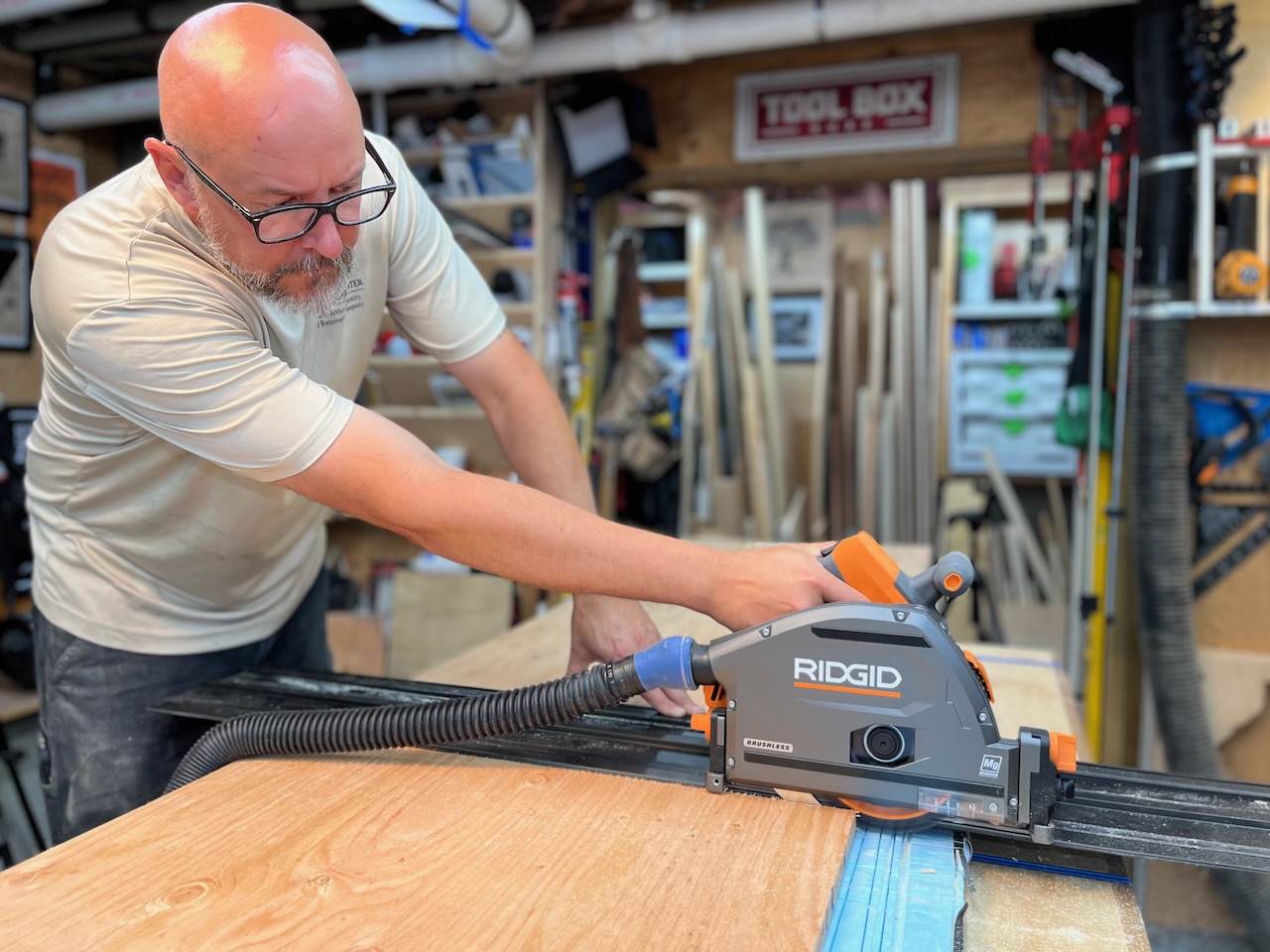
Track Compatibility
The Ridgid comes with two [2] 27.5” tracks that easily join with two connecting rods. The tracks appear to be robustly made and of good quality. Joining the tracks is easily accomplished by using two joining rods [supplied] and tightening the Allen set screws. The joining rods are stored in the track when not in use. We really liked the Allen wrench storage location. Both the joining track and blade change Allen wrenches are stored securely in the rear of the saw. A great location and is well-designed and thought-out.
Let’s talk about the two small tracks. At first, I thought it odd, that Ridgid offers two smaller tracks in its saw kit. Offering it with the saw is nice to get folks started cutting, right away. Ridgid claims that they offer the two smaller tracks because users prefer them for portability and transportation. They stated found that many users like the smaller tracks for smaller cuts, like small closet doors. I’d like to know who they asked because I don’t agree with that and feel that the decision is being driven by the merchandise and packaging departments for Home Depot shelf displays and space-saving concerns.
Don’t get me wrong, offering any track with a track saw is a win but I’d prefer it be a 55” track and make the 27.5” track an add-on accessory. I recognize that many pros have cut down damaged tracks or made custom-sized [smaller] tracks for specialty work, but most pro users and serious enthusiasts want a 55” track and a 9-foot track for breaking down sheet goods.
The unicorn solution here is to offer a 55”: track and then buy a second 55” track for ripping plywood the long way.
Ridgid offers two longer tracks as accessories:
- 55 in. Track Saw Guide Rail (AC55TS)
- 60 in. Track Saw Guide Rail (AC60TS)
- Track Saw Material Clamps 2-Pack (ACCL2)
We tested the Ridgid saw on Milwaukee, Makita and Festool tracks, the Ridgid saw will not work on them. Ridgid claims that the reasoning behind this was that Ridgid found that other brand saws that “fit” Festool tracks [inventor of the track saw] are not a perfect fit, which can lead to very rough cuts. The Ridgid saw has its own track so the user will never have this experience.
I’m calling Ridgid out on this, the TBB team has tested every cordless track saw to date, and we have not found that statement true, in fact, our Makita and Milwaukee track saws make incredibly precise cuts on a Festool track.
The Ridgid track, like other tracks, has a non-slip grip strip that works well and is compatible with standard track clamps. The Ridgid saw comes with one clamp, which is a basic design with no frills or UX thought. We found in many, to most track-cutting applications this clamp was not needed.
Two nice safety features on the saw are its riving knife and anti-tip knob that keeps the saw on the track when set at a bevel.
Blade Compatibility
For some reason, Ridgid chose to go against other manufacturers who use a 20 mm blade arbor. Instead, they opted for a 5/8” arbor citing that the blades are more accessible to the source. The 6-1/2” has a 1.6 mm kerf and this saw does allow it to achieve a deeper cut in 2x material as opposed to their direct competitor, Festool — which has a 6-1/4” blade.
Rail Tension Bars
The two-rail tension knobs keep the saw snug on the track. The rail tension track adjustment cam or rail slot adjustment worked perfectly to adjust the saw to the track. In fact, we set the knobs to the loosest setting, indicating a perfect, snug, out-of-the-box fitment.
On the bottom of the saw’s shoe plate are a set of “replaceable” rail tension bars with screws. These bars can significantly wear over time to the point that they can’t be adjusted to keep the saw snug on the track. It appears that Ridgid made them serviceable and replaceable, eliminating a potential failure point.
Dust Collection
We took several videos cutting different depth materials. We compared the videos and evaluated the dust left on the table after making cuts and we determined that the dust collection when connected to a vacuum is good, not great.
We liked that the dust port is sized to accommodate the most common port sizes which is 1- ¼” ID and 1 7/8” OD. My Rockler Dust-Rite, and Festool hoses fit the dust port nicely.
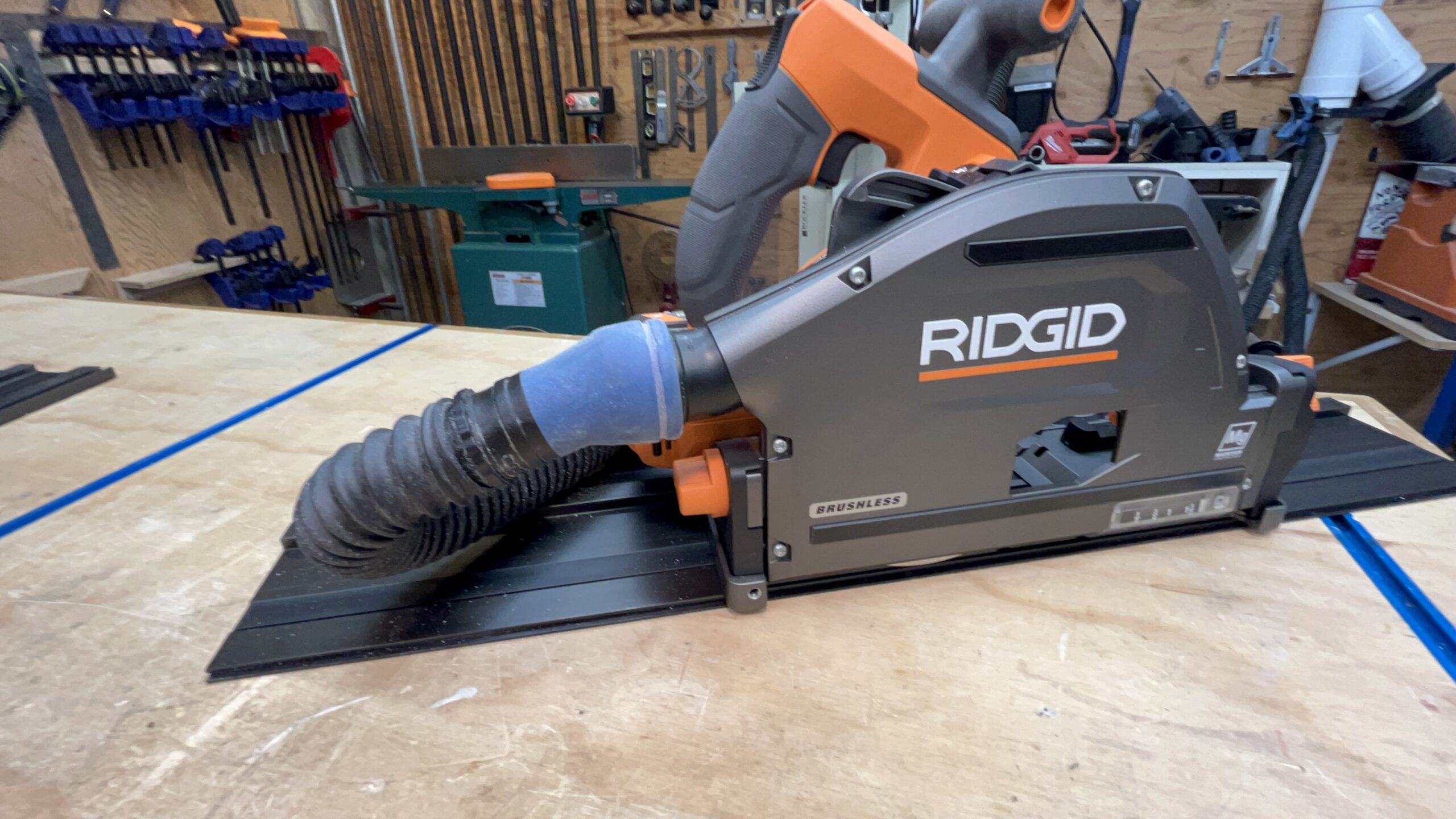 Electric brake
Electric brake
The electric brake safety feature on the Rigid track saw is fast, but not as fast as some. I’ve seen a few saws go around a bit, but not this one.
Riving Knife
Another safety feature of the Rigid Track Saw is its spring-loaded riving knife. The riving knife is designed to maintain a gap between the board and the cut-off board. It prevents the kerf gap from closing and causing pinching on the blade, which can sometimes initiate a kickback. The riving knife worked as designed and is a nice feature.
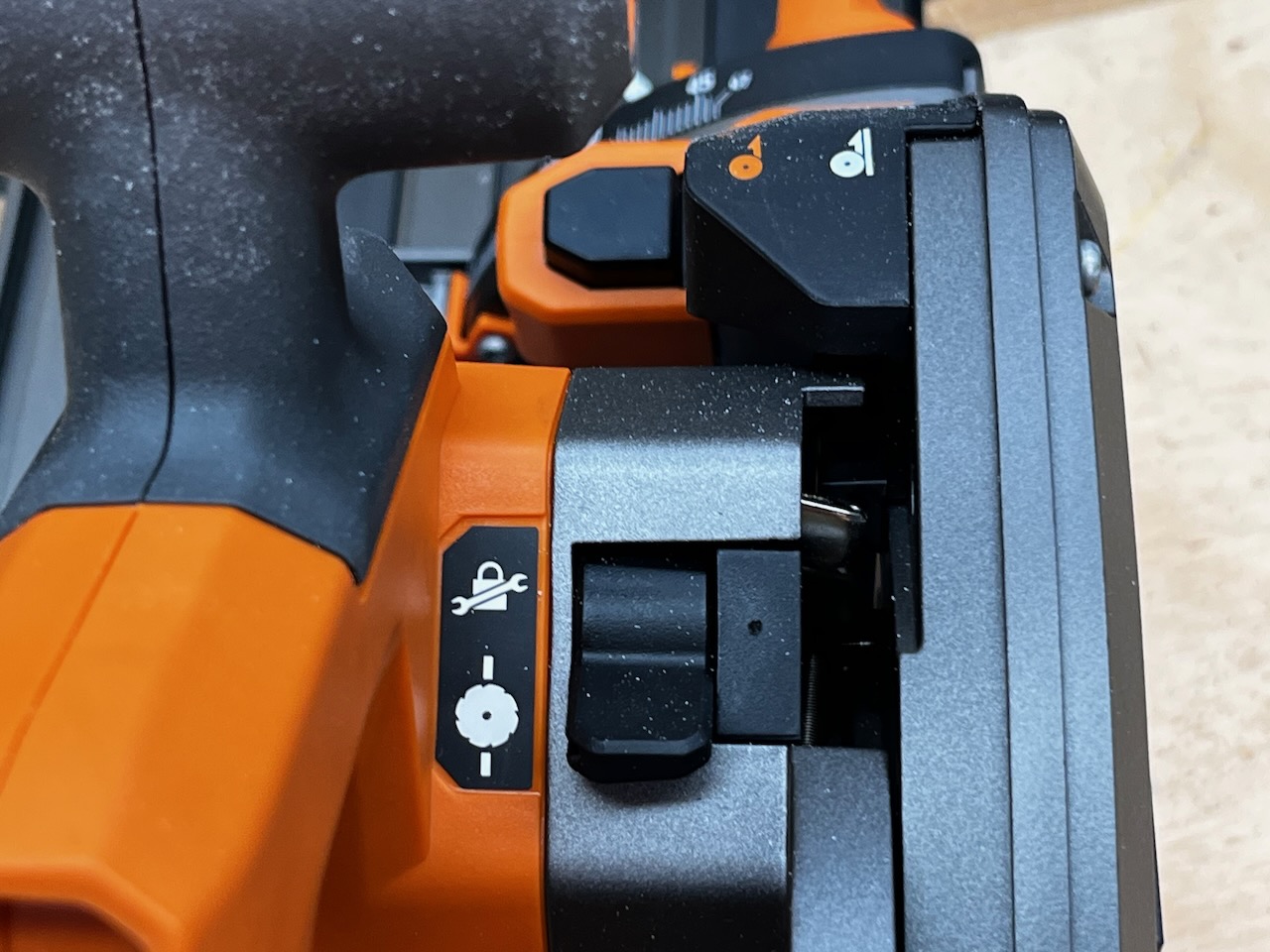
Changing the Blade on The Ridgid Track Saw
The Ridgid Track Saw has a “lock-off” button that locks the saw, once lowered, in a plunge position. You’ll want to do this with the battery removed. Once the lock-off is engaged the blade’s arbor nut is exposed in the blade change window. An onboard Allen wrench which is smartly and tightly located in the rear of the body of the saw is used to remove the blade.
Saw Pivot and Plunge Mechanism
Ridgid spent some time on the saw’s pivot/plunge spring and mechanism. They obviously heard our feedback on other brand saws [i.e., DeWalt’s plunge mechanism]. The Ridgid’s plunge spring is robust, and the plunge movement is smooth.
The trigger safety, and release button to power on the tool is centered in the handle, ambidextrous, and easy to activate.
Depth of Cut | Depth Scale | Bevel Cuts
The Ridgid track saw Depth when set to 90 degrees will cut 2-1/8” on the track, and 2-1/4” off the track When set to 45 degrees the depth of cut is 1-1/2” and 1-5/8” off the track.
The depth of cut is controlled by an intuitive and easy-to-operate slider, activated by a large thumb button. There is no fine adjustment depth screw for dialing in micro-adjustments which was disappointing.
The saw can bevel from -1 to 47 degrees. The saw bevel is controlled by two thumb knobs [front and back] on the saw. To achieve -1 or a bevel greater than 45 degrees [46-to-47-degree max] there is a bevel override slider, which moves forward and allows the saw to achieve the extreme bevel cuts. To bevel slider does stop at 22.5 bevel angles, there is no button to choose or ignore this detent stop. We found that setting a bevel on this saw was like most of the other saws. It was intuitive, fast, and easy.
The depth of the cut scale is highly visible and easy to learn. There are two rows of measurements. The white markings are for on-the-track, and the orange marking for off-track use.
The shoe plate on the saw does not have any indents indicating the saw blade location at 90 and 45 degrees when using the saw off the track. While I don’t find myself using a track saw off the track, I can see where this might be useful. For example, making a free hand cut in flooring close to the wall, where the track doesn’t fit.
There is no scoring feature on this saw.
Battery Attachment
The battery is well-placed and is easily accessed without tool or track interference. The battery also inserts and detaches easily from the tool.
Ridgid Track Saw | Fit and Finish
I didn’t have to use this track saw long to get that “first impression” feeling on the build quality, fit, and finish of this saw. If I had to use one word to describe it, I’d say “basic.”
Comparing Track Saw Prices
The Ridgid track saw sells for $399.00 as a kit. The kit comes with a 6.0 HD battery, charger, two 27.5” tracks, 6-1/2-inch blade, Blade and track wrenches, Riving knife, Track clamp, and two connecting bars.
- Dewalt $619 comes with a track and battery
- Festool $879 kitted track and batteries, Systainer box
- Makita 36 V $600 comes with a 55″ track
- Makita 40 v $699 comes with a track, battery, charger, and 2 boxes
- Milwaukee $577 domes with a 55″ track
- Ridgid $ 399 Includes 2 – 27.5” tracks, batt, charger, clamp
No matter which way you look at it Ridgid gets you into a track saw for at least $200 less than its pro-grade competitors.
RIDGID Track Saw Warranty
I don’t talk enough about warranties on tools, and some of you call me out on that.
Ridgid is offering a Lifetime warranty on the track saw with free parts and service. Obviously, there is fine print to read but overall, that’s a really nice warranty.
Overall Impression
The Ridgid track saw is underpowered compared to the pro-saws I’m used to using. If you let the saw cut at its speed, I found it will make consistent, repeatable, accurate cuts.
The saw is basic in features and not as robustly designed as I’d prefer for me, but it’s a well-priced saw for someone new to the trades, and a great shop saw for serious enthusiasts or woodworkers.
RIDGID Track Saw Review Video
About the author
10 Comments
Leave a comment
Disclosure
Product reviews on this site contain our opinion of a product or service. We will always strive for objectivity and transparency in our reviews. Our goal is to provide readers with honest, objective information based on our own experiences. We never have and never will accept payment in exchange for a positive review. Many of the products that we review are provided to us for free by a manufacturer or retailer. In some cases, we also have advertising or affiliate relationships with manufacturers and retailers of products and services we review. For additional information please visit our additional disclosure policies.











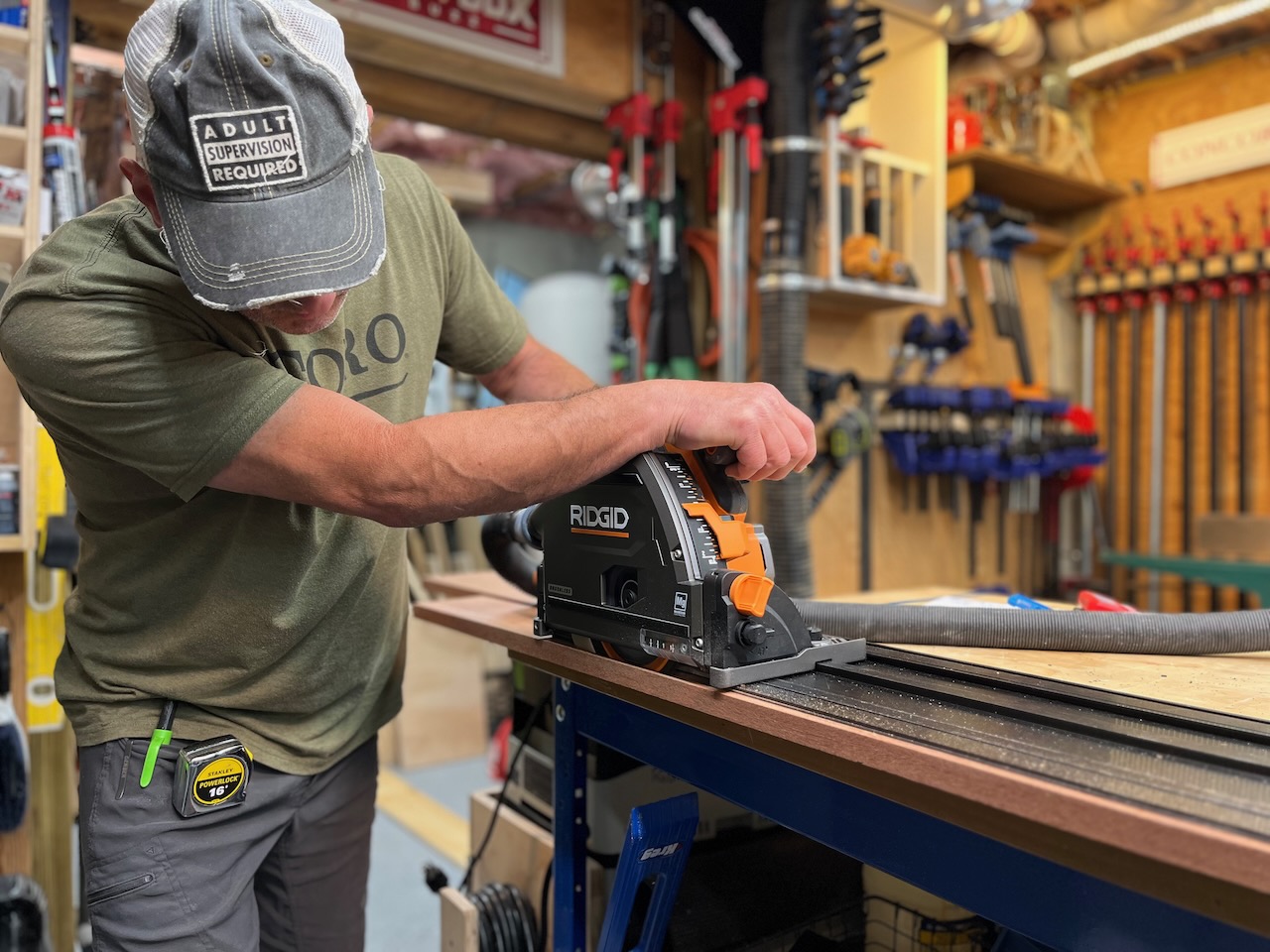

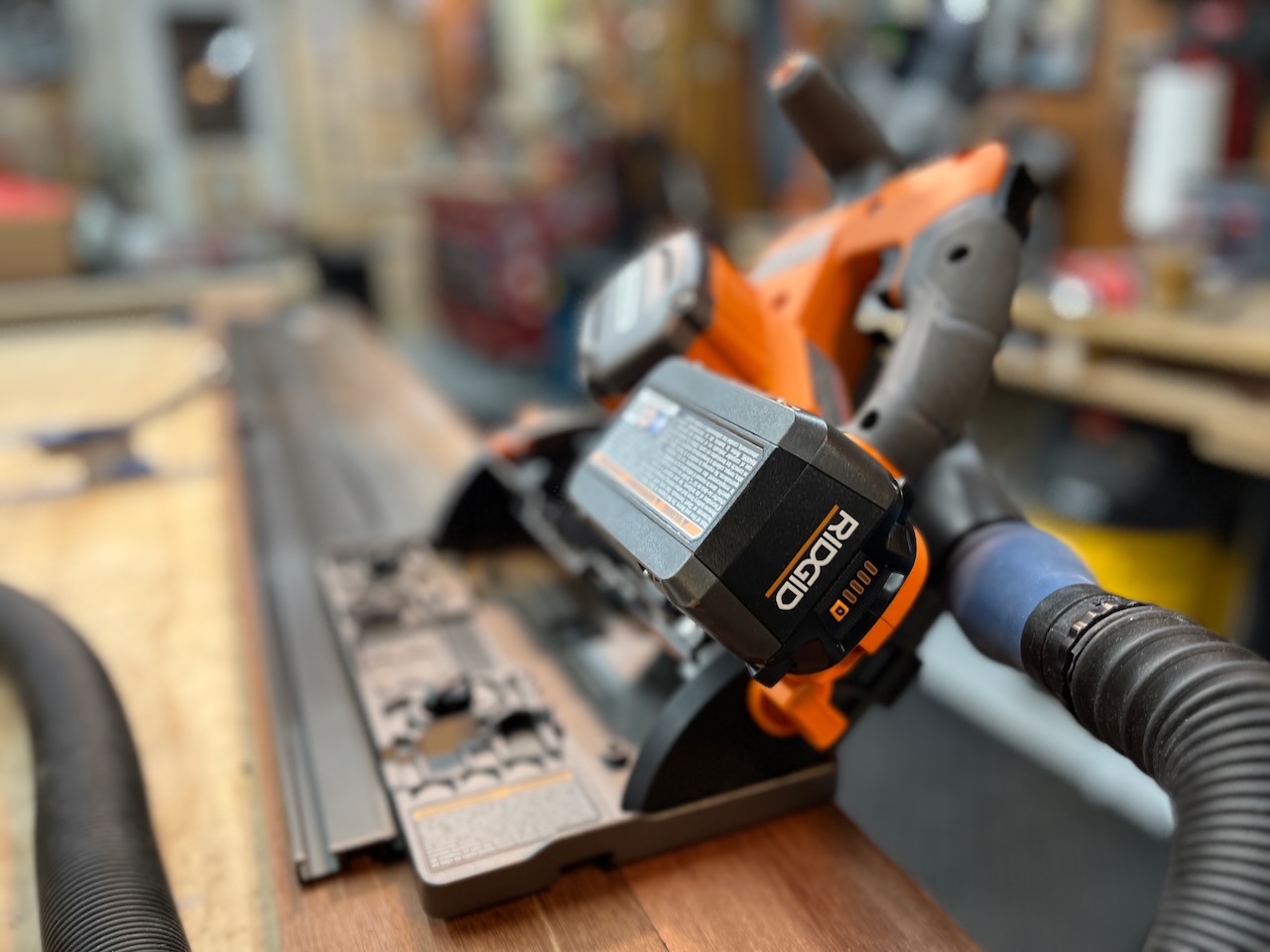
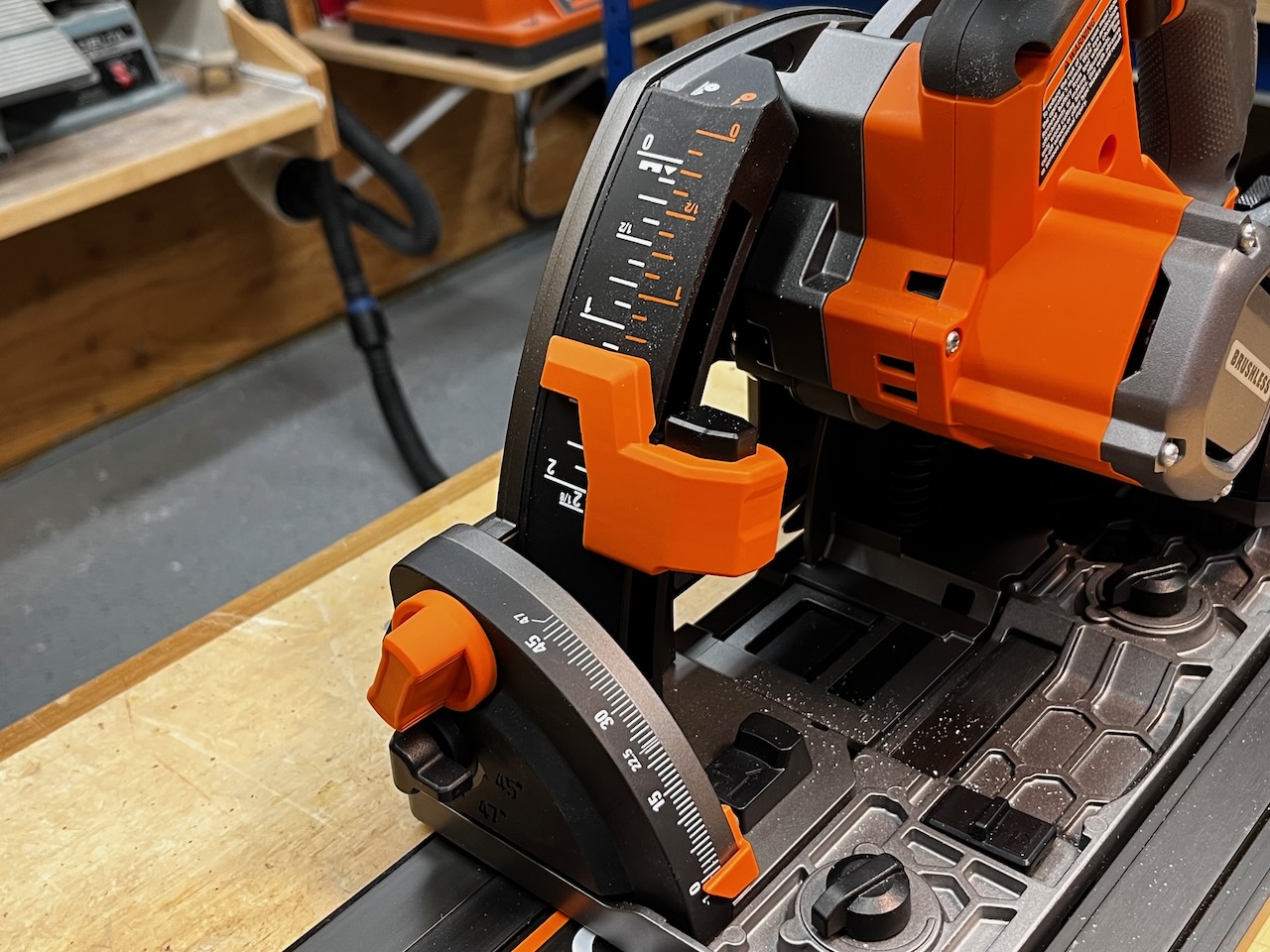
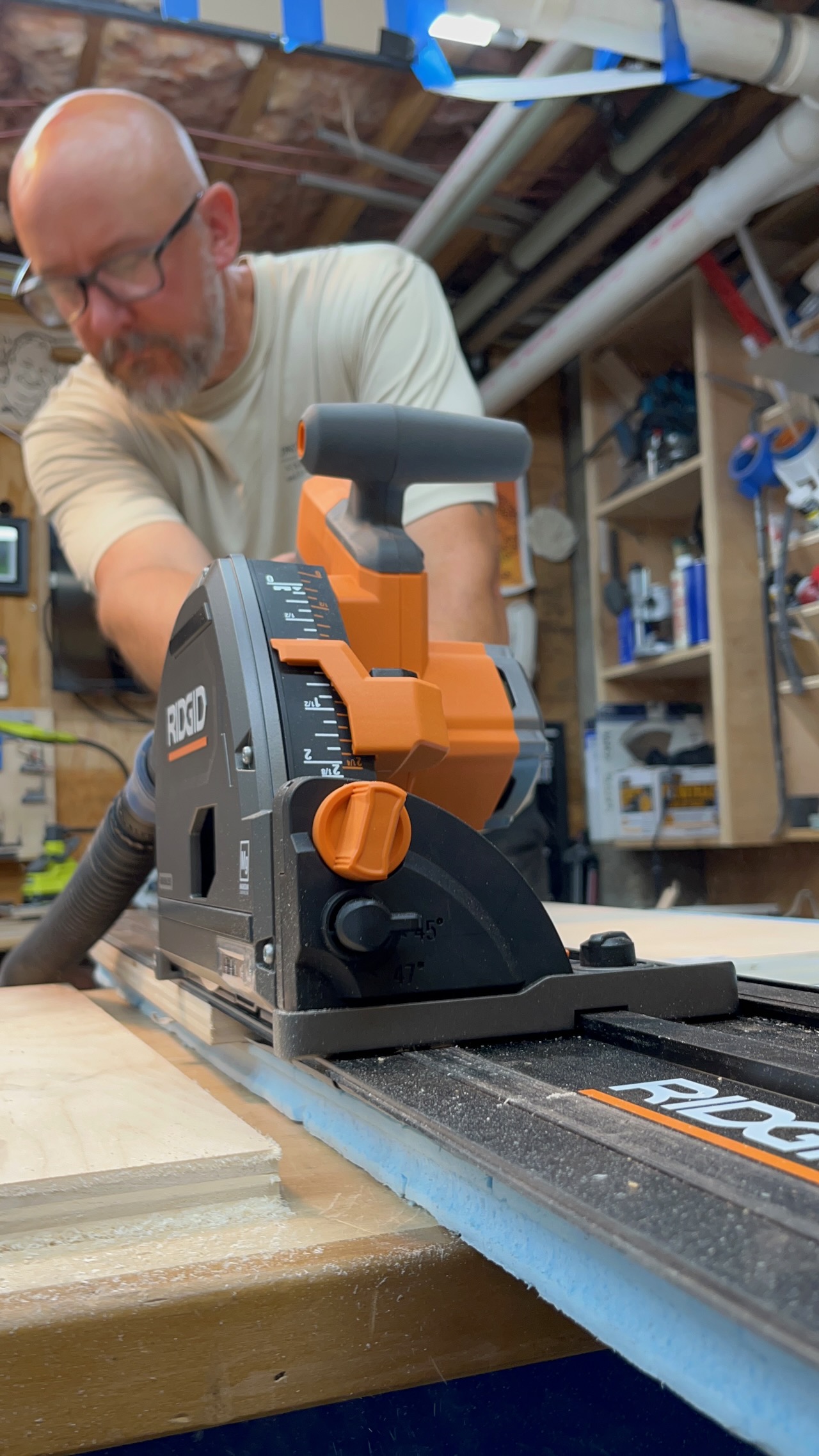
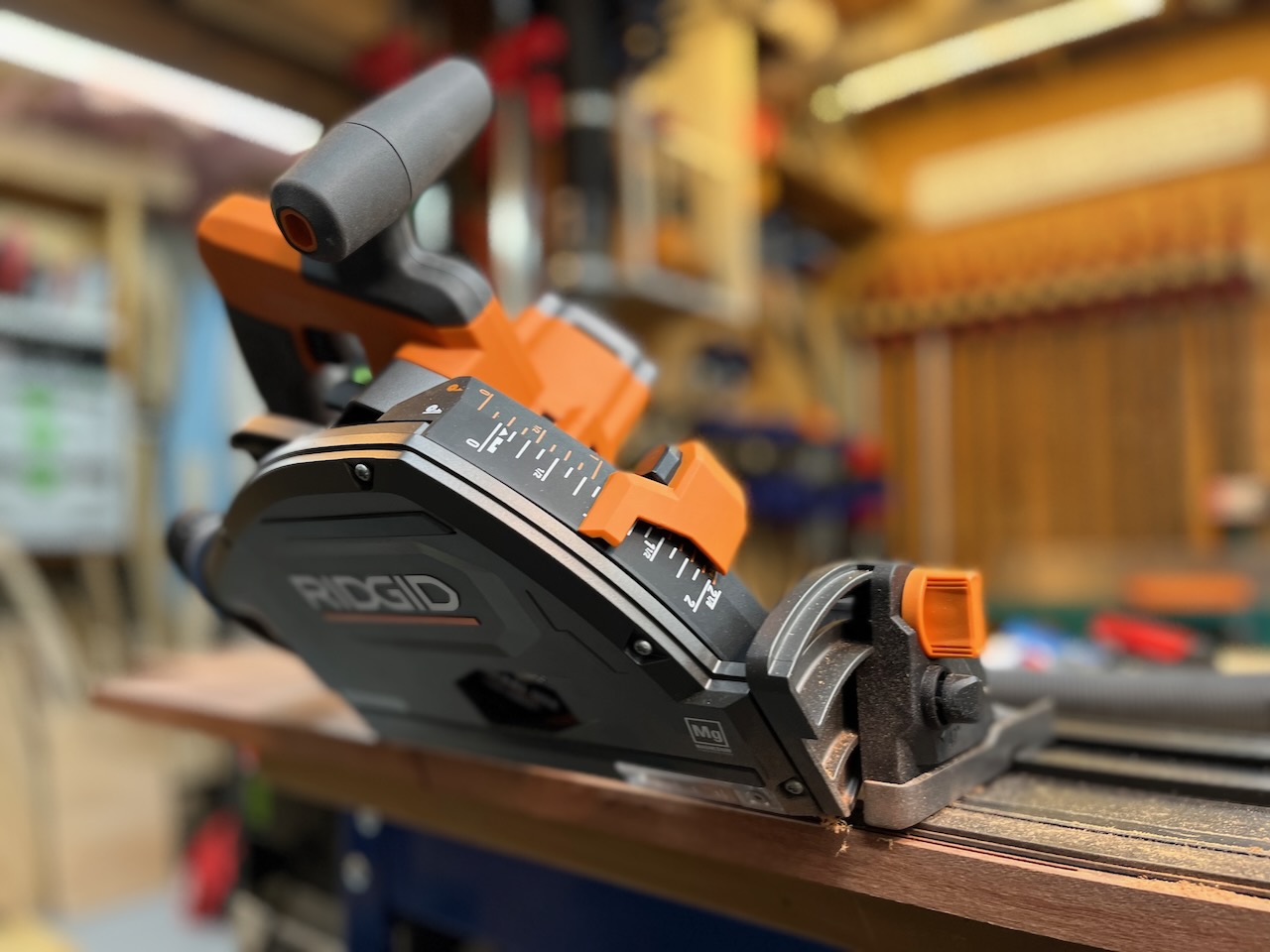
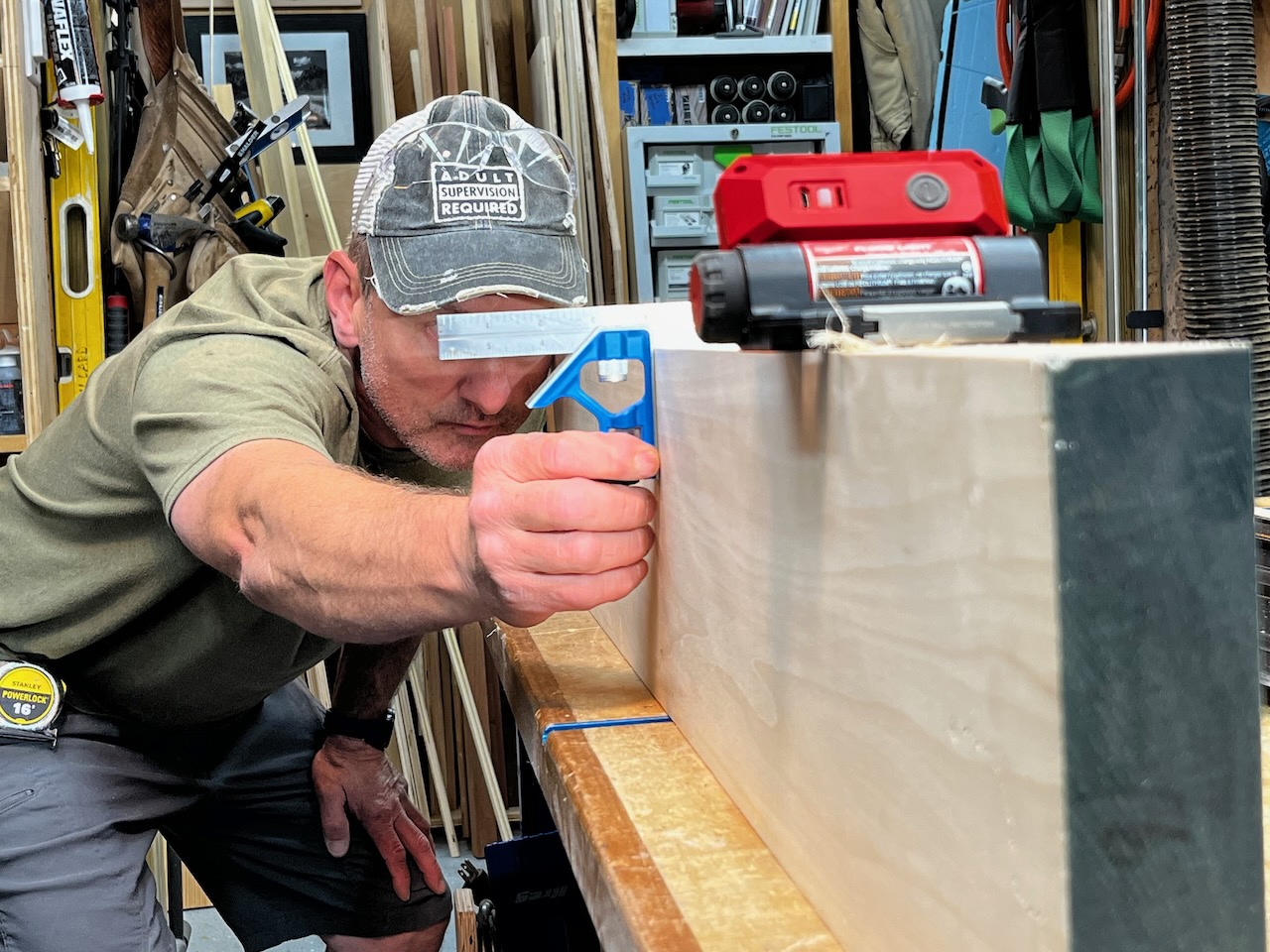
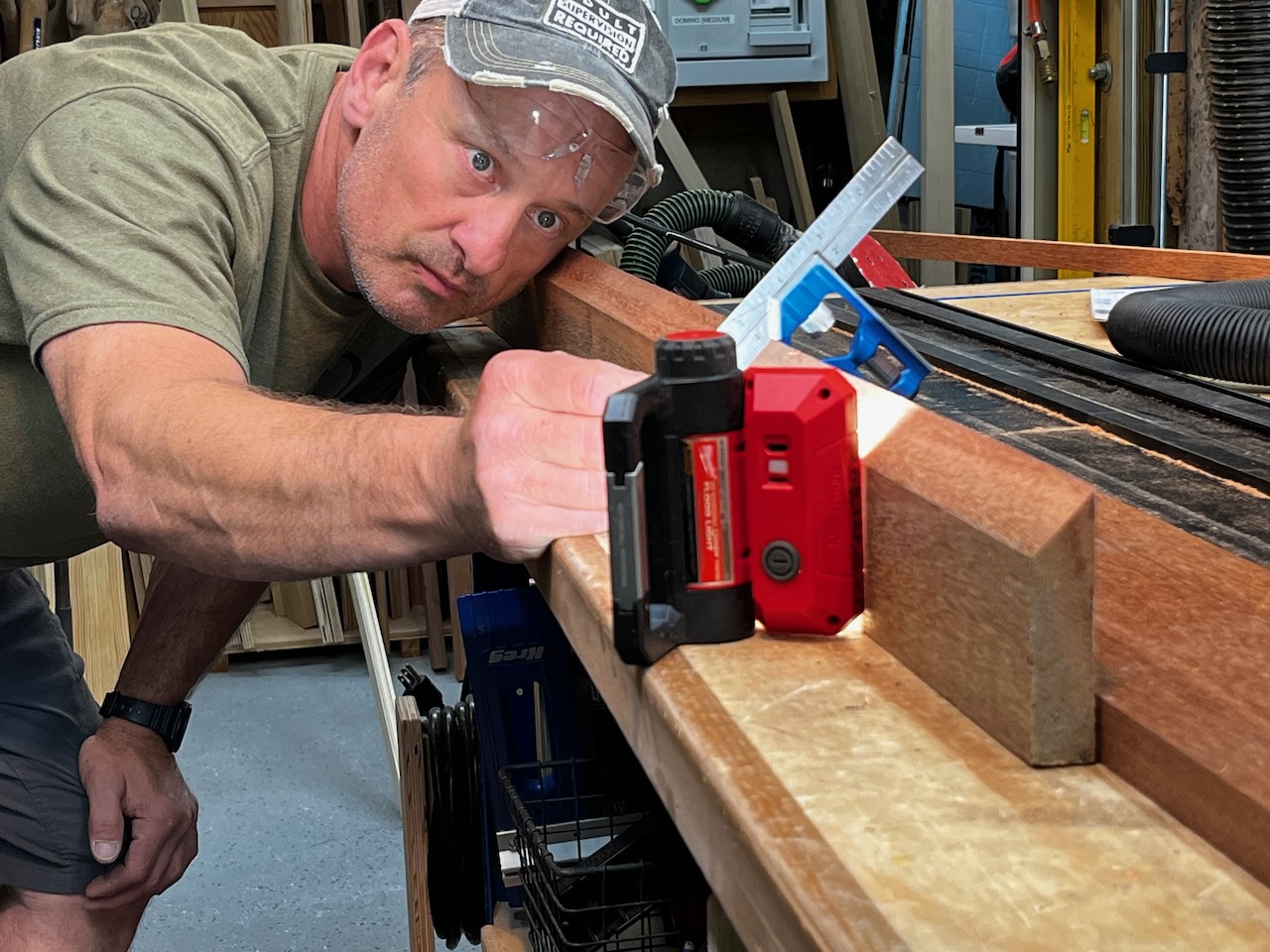
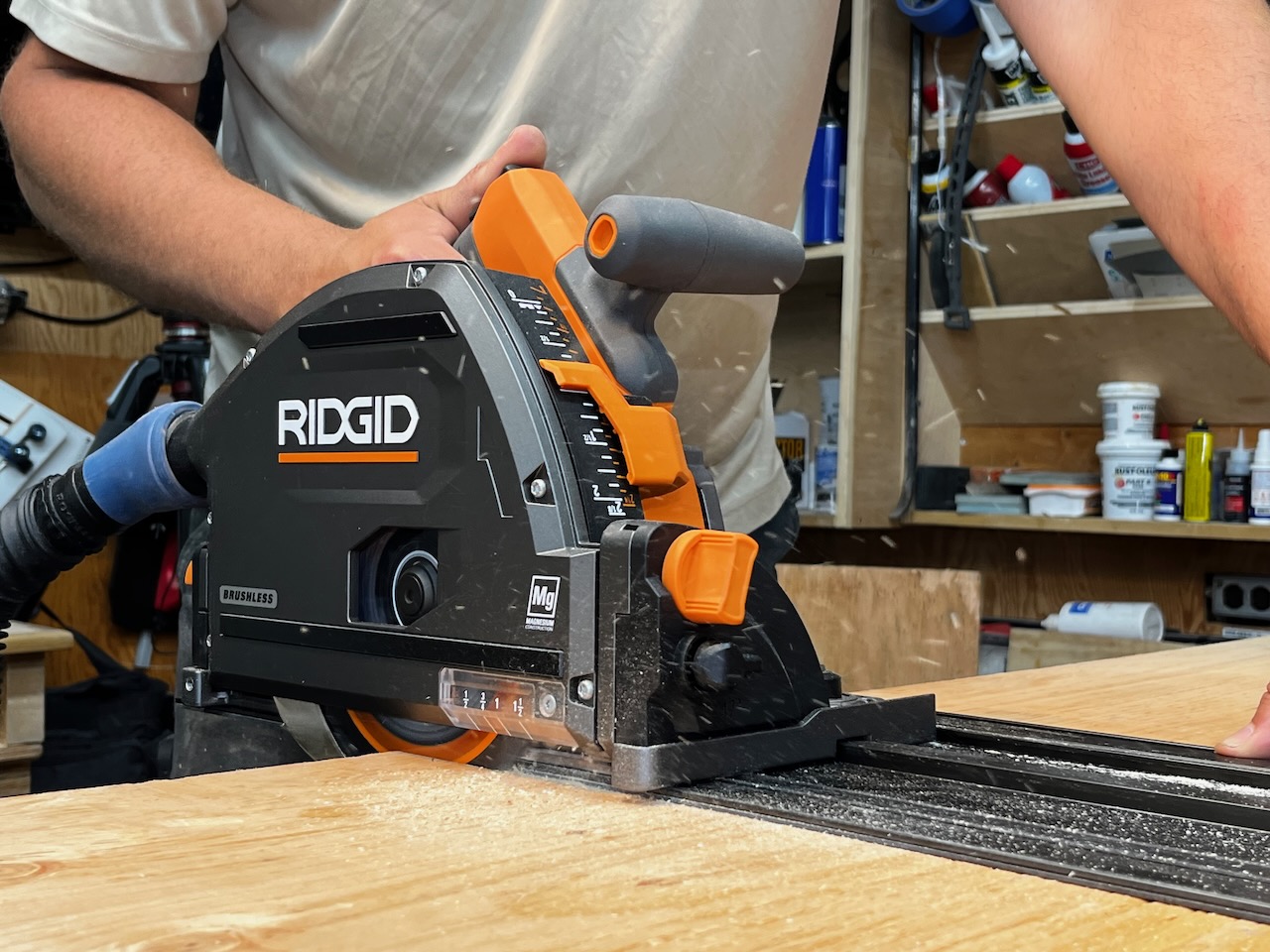
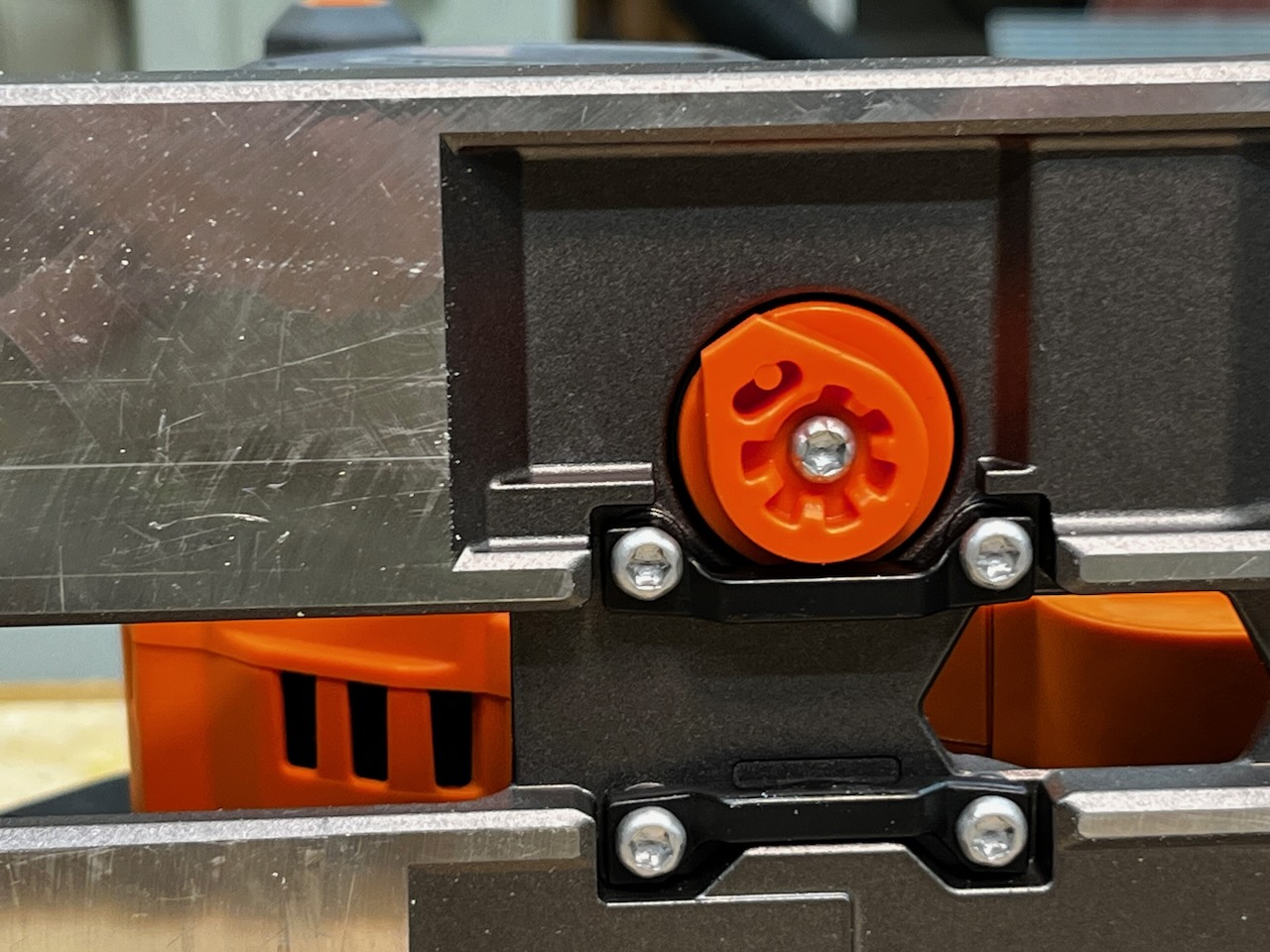

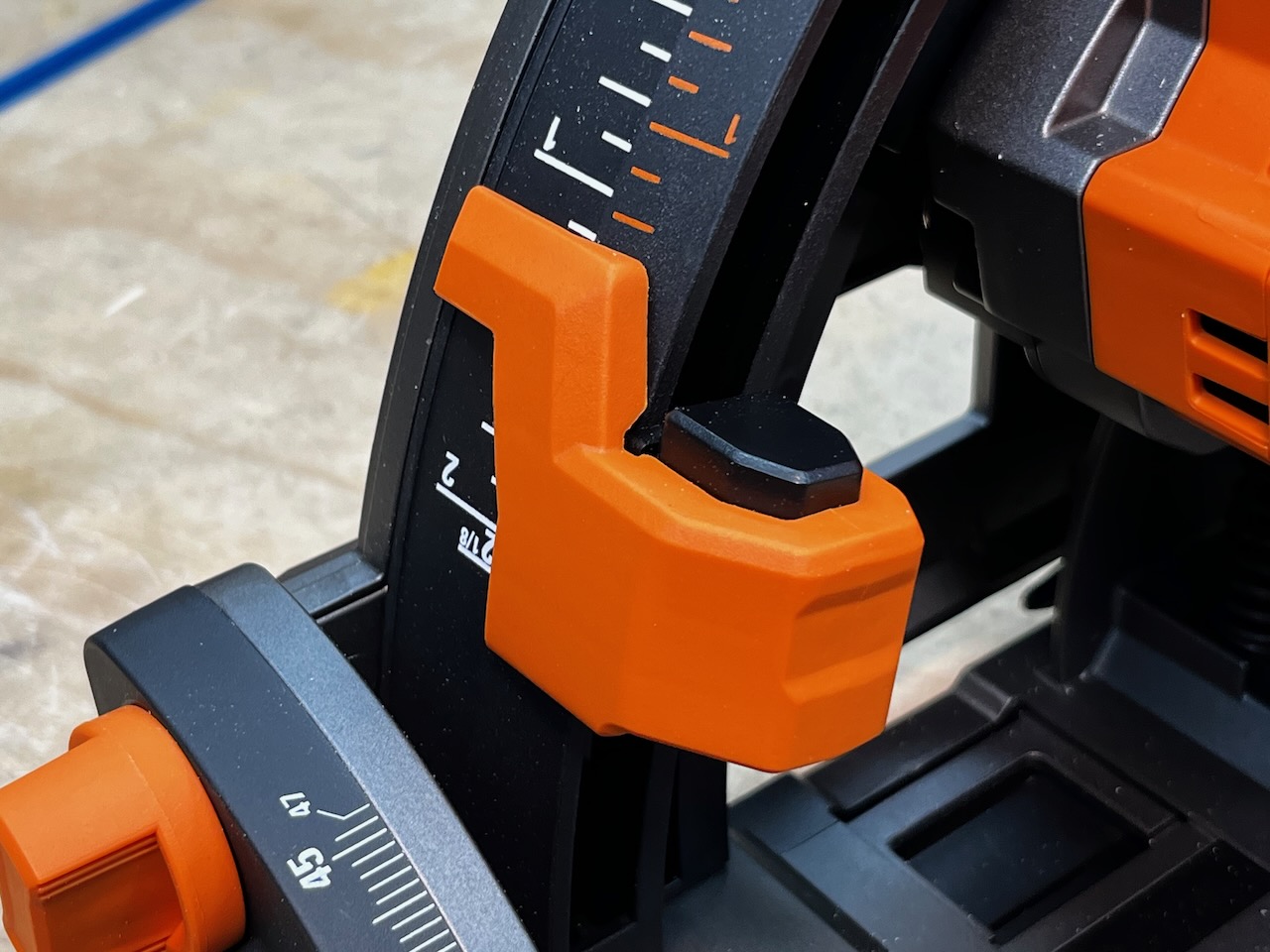
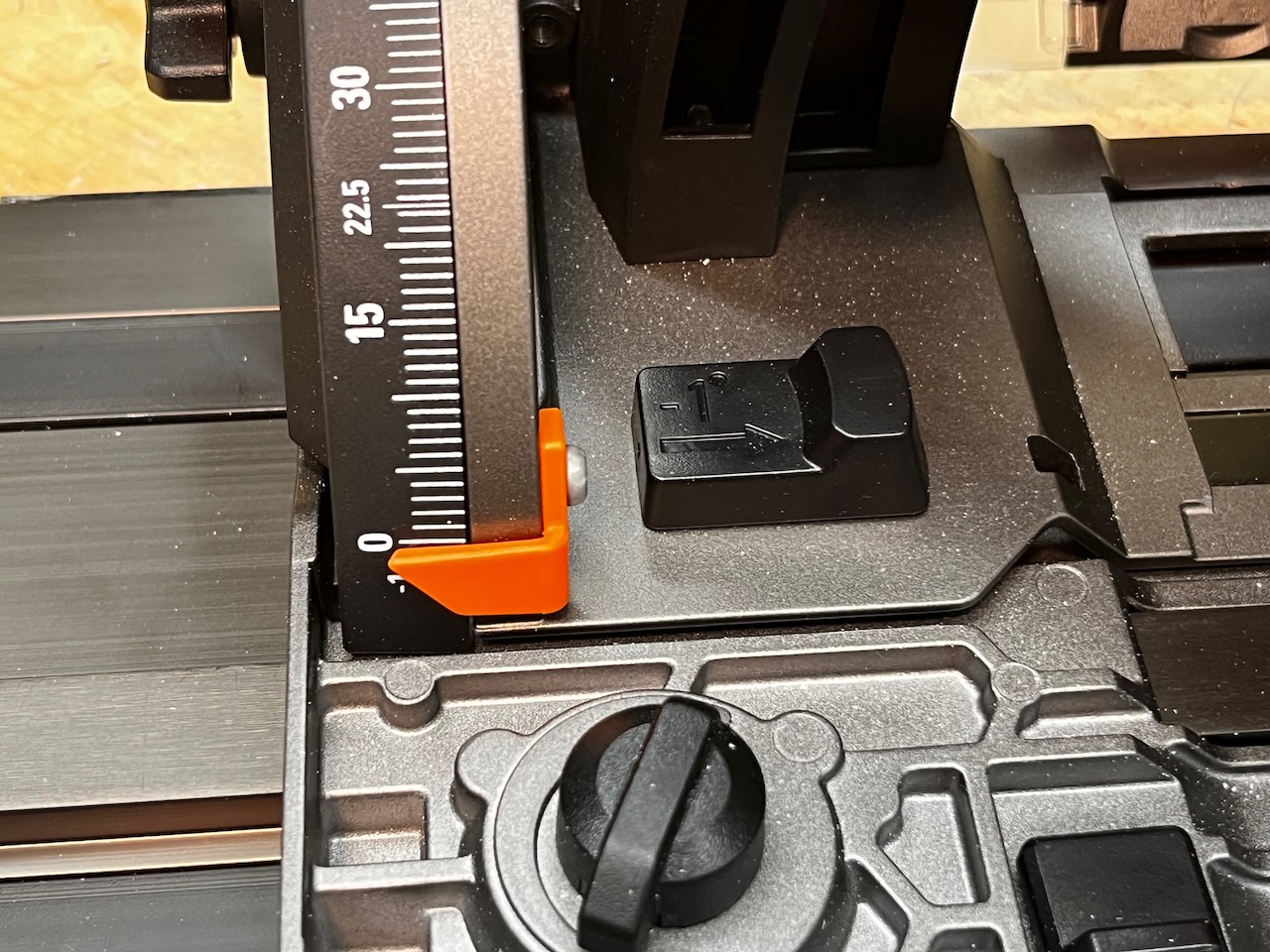
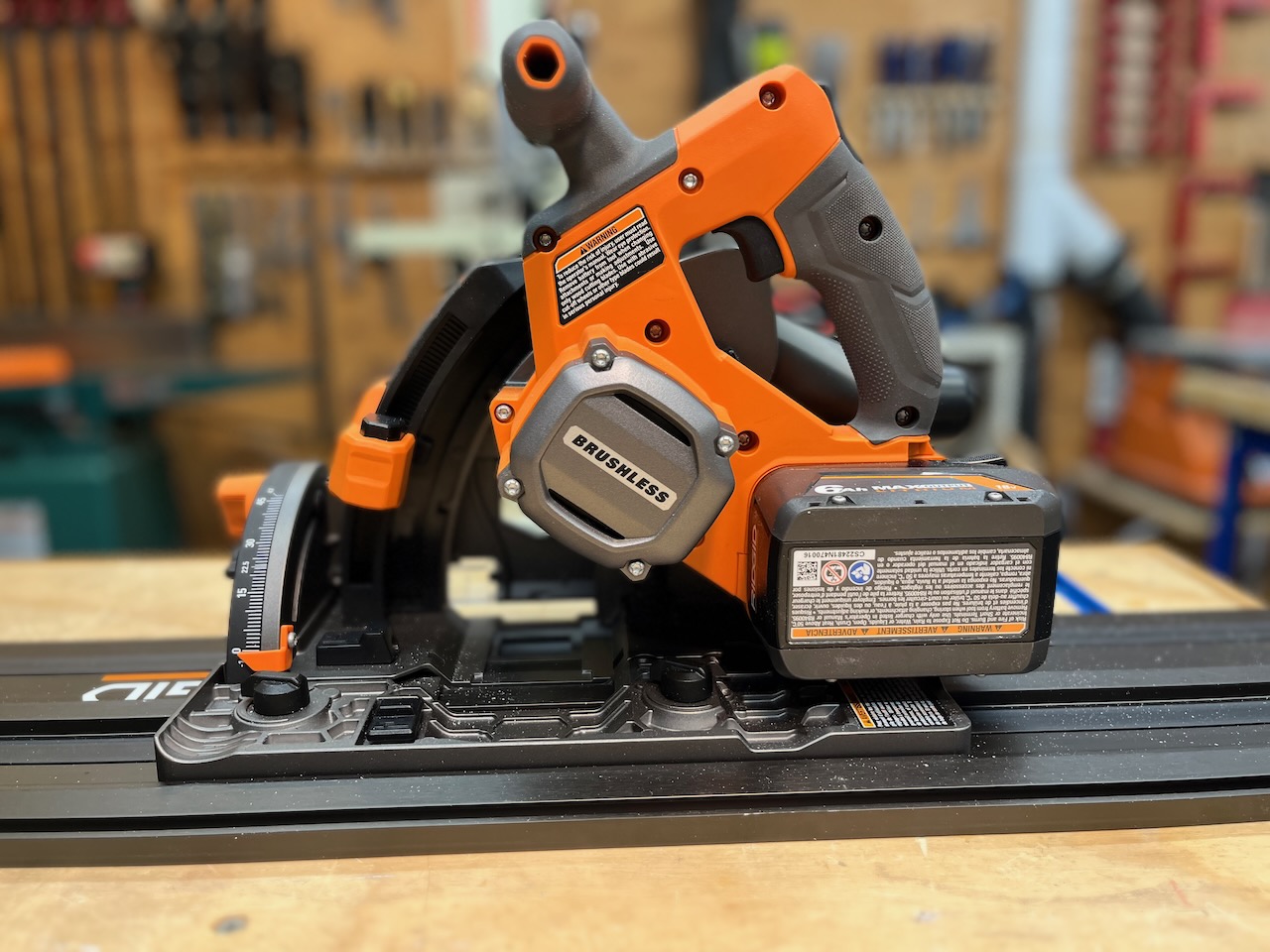
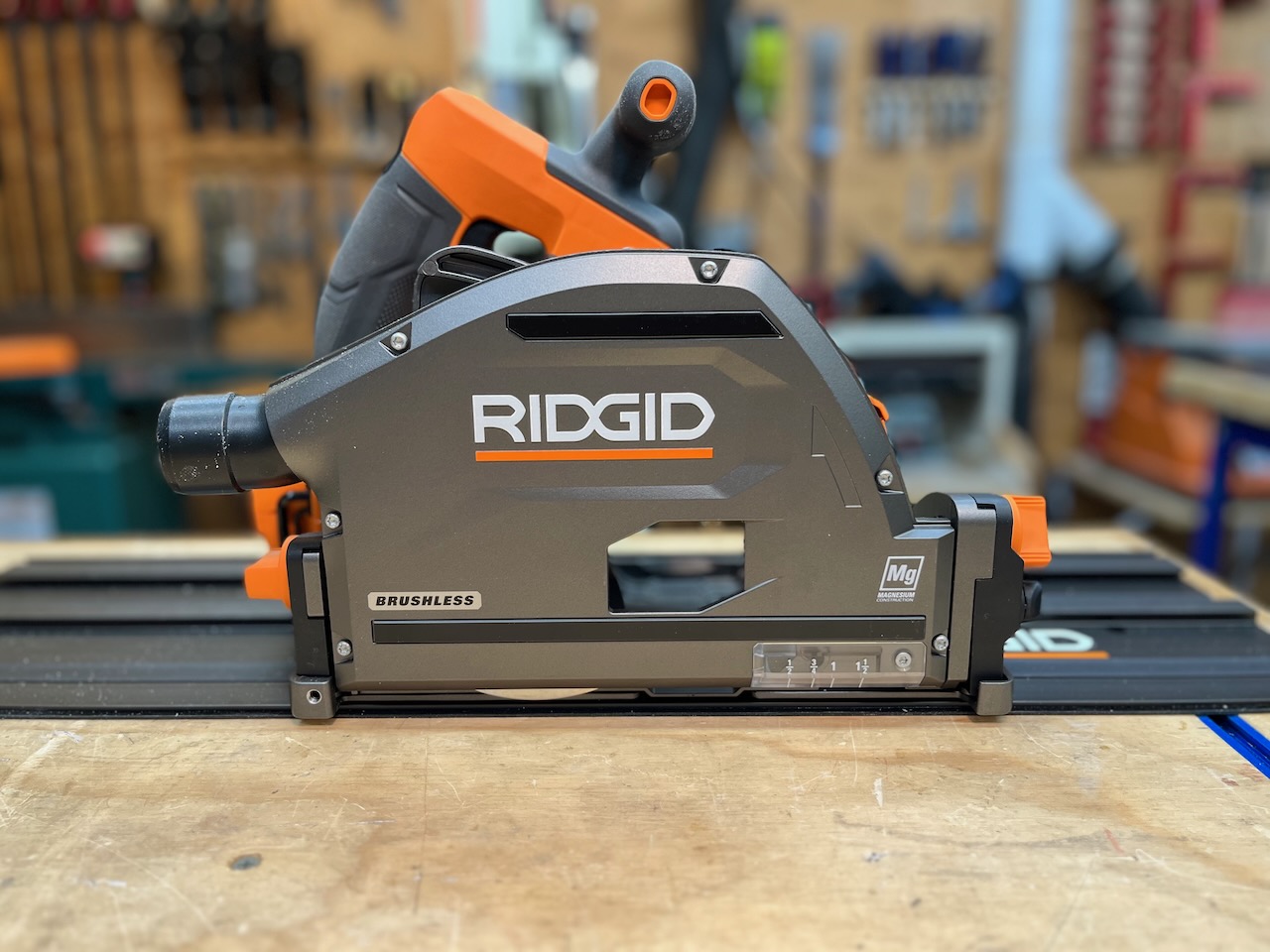












Since they are sibling brands, and since you reviewed the Ryobi track saw, what is the compatibility like between the Ridgid and the Ryobi track saws and tracks? The profile of both tracks looks similar.
no compatibility
This is an excellent review, and it is really appreciated. I have been waiting this for some time now. I am budget conscious and like to stay with in my platform if at all possible.
Is there confirmed release date? I see a number of reviews, but the ridgid website still says Coming Soon, and I can’t find any information about an actual release date. Trying to figure out if I should wait for it, or buy something else if it’s going to be awhile.
Ill I have is soon
There seems to be some conflicting comments between various reviews and within your review.
Is the battery included or not. Your review says yes in more than one spot and no in another. Other reviews say no.
Which is it?
I am currently using both Ridgid and Ryobi battery tools but this track saw will never leave my shop so battery or corded is no concern .
Sorry No – will correct that
What is behind manufactures logic, battery free hand saws, blade left waste left, track saws blade right waste right? I started in the construction industry back in 1959 cutting timber with a handsaw and being right handed the waste side always fell to the right. Moving up to a power sidewinder saw, no difference,blade right hand, clear line of sight and the waste always fell to the right.The load and balance of the saw lay on the retained timber side. With a worm drive saw blade left no clear line of sight and load and balance on the waste side and the same with the battery free hand saws.
Are you sure about the included blade kerf thickness? Manual says no blades less than 1.8mm for riving knife to work. What is the riving knife thickness? There’s a row for it but it’s blank.
Im not sure I’ll have to reach out and ask Manuf.